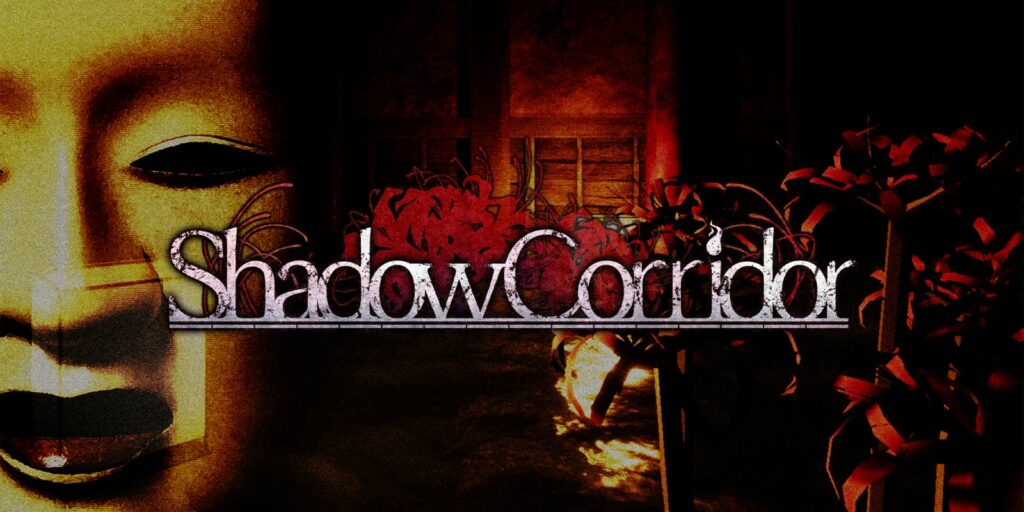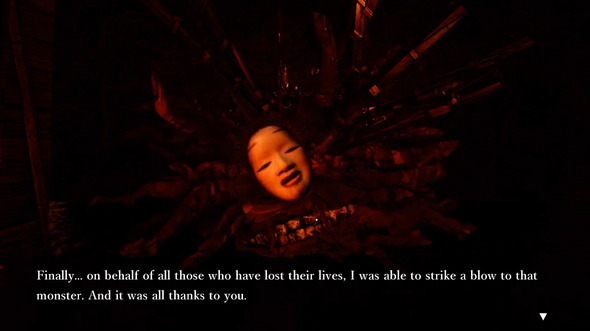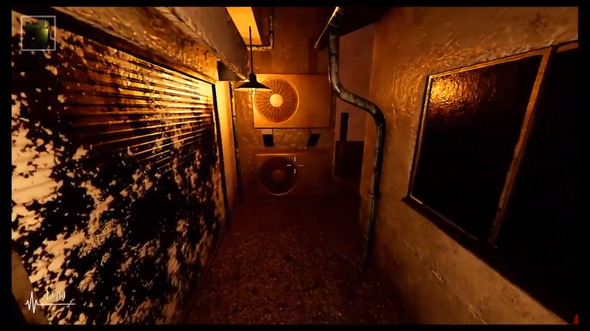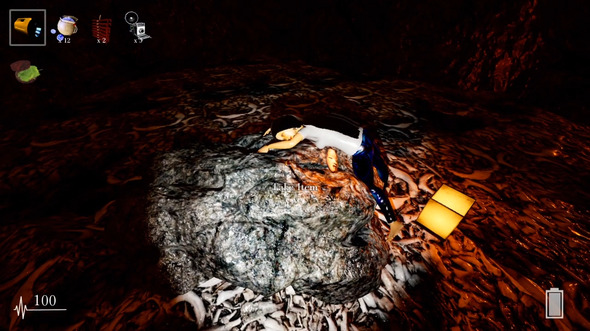
Developer: KazukiShiroma
Publisher: NIS America
Platform: Switch, PS4, PC
Tested on: Switch
Shadow Corridor – Review
Halloween is right around the corner, which means that developers are bringing spooky games to pretty much every platform under the sun. While most of these seasonal offerings tend to stick to vampires, zombies and spooky scary skeletons, occasionally a game appears that takes its horror in a different direction. One of those games is Shadow Corridor, which first appeared on PC in 2019 and now arrives on the Switch to bring you scares based on Japanese spirits. Granted, the game has been available on the Japanese eshop for quite some time now, but the timely release of the game on Western shores seemed like the right opportunity to take a closer look at what Shadow Corridor has to offer.
Story
In all honesty, we had a hard time piecing together Shadow Corridor’s narrative at first, but that was probably because we were overthinking it. The story is rooted in Japanese spirituality, although it takes quite some time to get going. Near the start of the first level, you’ll find an old newspaper clipping detailing an archeological find of sorts, but it’s not quite clear how it ties into the events that unfold over the course of your playthrough. New story elements are introduced gradually, and eventually, things become clearer, and although we’re not going to give any major spoilers here, there are some things that we feel need some explanation if only for the sake of giving context to this review. To Shadow Corridor’s credit, the game doesn’t just make stuff up and instead digs into actual stories about Japanese spirits.
The game’s opening blurb explains how the player character is drawn into a corridor by childhood memories. Unfortunately for the player, this leads them into a strange world where evil spirits, conjured by Noh masks, are out for blood. In order to defeat the evils that haunt him and return to his own world, the player must collect magatama beads, which are talismans of good fortune related to Shinto deities. Along the way, the player is drip-fed with gruesome stories about past events related to the evil spirits, though the game never explicitly explains everything. Not giving the player enough information in a horror story can be really effective when done right, as your mind fills in the blanks subconsciously. Unfortunately, Shadow Corridor relies a bit too much on leaving out essential information, making it hard to really get drawn into the story. Perhaps developer KazukiShiroma assumed that players would either research the spiritual elements outside of the game, or perhaps this is just common knowledge in Japan, but many of the story elements are obscure for a Western audience.
Graphics
Let’s not beat around the bush: Shadow Corridor is a rough-looking game. We can’t blame the poor visuals on the Switch not being able to handle the game either, as it launched on PC in 2019, which isn’t all that long ago, and it looked dated even then. The game’s overall lack of detail is somewhat masked by covering a significant part of the environment in darkness, making it difficult to see what is happening, unless you’re relying on a lighter or a flashlight -which requires things like batteries of course. As you progress through the game, things become more gruesome and bloody, although we felt the abundance of blood stains was just there to cover up for the lack of detail in some of the textures. Granted, we’ve played worse-looking horror games –Outbreak comes to mind- but we can’t say these are good-looking visuals.
Sound
We often recommend using headphones while playing a game, in order to truly immerse yourself in the soundscape. Shadow Corridor is not one of those games, simply because of its reliance on sound-based jumpscares. Most of the game is drenched in silence, with only ambient noise audible, such as your own footsteps or environmental sounds. Every few minutes, however, a loud noise will occur -for a variety of reasons-, attempting to scare the crap out of you. We found this to be more annoying than actually scary, and after playing with headphones for a while, we ended up with a headache. Playing with just the TV sound was equally “scary” but at least it didn’t physically hurt. There’s not a whole lot else we can say about the soundscape, as music is pretty much non-existent apart from in the game’s menu.
Gameplay
Despite being billed as a survival horror game, to us, Shadow Corridor felt like a walking sim with jumpscares for the most part. Rather than a single large interconnected world, the game is divided into separate levels, and a full playthrough should take you roughly six hours. Your aim is to collect the magatama beads in each level while avoiding the evil spirits that wander around the corridors that make up the levels. Should one of these apparitions catch you, it’s game over, so outrunning them and hiding from them is key to survival. There’s nothing groundbreaking here, but the Japanese setting provides a welcome change from the traditional zombies or unsightly mutants that typically provide the threat in games such as this. At times, we felt like this is a game that was designed to be streamable, for lack of a better term, by which we mean that it would be very suitable for streamers on Twitch or similar platforms because of its simple gameplay premise and the sheer amount of jumpscares.
To the game’s credit, there are several things that it does well: whenever you start a level, the layout is randomly generated, so no two playthroughs are the same. The layout does not change if you die, but we did find that returning to the game after closing it provided us with a different floor plan, even without starting over a level. Given that you’re only provided with a minimap while playing on novice difficulty, it’s easy to get lost. This adds to the intended feeling of disorientation that the player is supposed to feel, and it also incentivizes replaying the game, especially at varying difficulties. Apart from the fact that lower difficulties provide you with more information, such as the aforementioned minimap, the main difference between the difficulty levels appears to be the number of enemies that inhabit a level.
Shadow Corridor’s enemy AI is among the better ones that we’ve played against, and there is a decent variety when it comes to enemy types. These range from a wailing woman-like creature that responds to the sounds you make -and which you can distract using things like firecrackers- to a massive monster that charges at you when you enter its line of sight but is seemingly oblivious to the sounds you make. Figuring out the blind spots of enemies is often essential to successfully clearing a level, although you’re best off avoiding them altogether if you can. Your controller acts as an enemy detector of sorts, vibrating whenever spirits are nearby -at which point the best strategy is finding a good hiding spot until the enemy moves away again.
While Shadow Corridor nails the survival horror aspect in regards to the spirits -which will instakill you if you don’t escape them- it falls flat in other regards. There is a lot of reliance on cheap jumpscares -which in our eyes boils down to a weak attempt to keep the player’s attention- but apart from that there simply isn’t enough present to keep the player engaged. Puzzles are laughably simple: if you run into a locked door, the key will always be within reach. This is because the game randomly generates level layouts of course, but there is little point in including puzzles in the first place then. Another seemingly pointless addition is the overabundance of healing items spread around the levels, given that you’ll rarely need them. The things that hurt you aren’t common enough to need this many healing items and the real threats will kill you in a single hit. This ties into a much larger problem, that of item balance. Useful items, like the aforementioned firecrackers, which can distract spirit enemies, are far too rare. We’re not quite sure whether or not the rarity of certain items is by design or simply a consequence of the randomly generated levels, but Shadow Corridor often feels unfair rather than challenging.
Conclusion
Shadow Corridor is a title that we only recommend to die-hard survival horror aficionados, and even then it’s a tough sell. The game sets itself apart through its Japanese setting and randomly generated levels. It all sounds great in theory but it falls flat when it comes to its execution. The rough-looking visuals, unbalanced gameplay, and reliance on jumpscares over a fully fleshed-out story make Shadow Corridor feel like a chore to play through rather than a horror game that will make you feel scared of entering a corridor in real life. If you’re a budding Twitch star looking for something to stream for the Halloween season, this might pique your interest, but for the majority of gamers, this is an easy pass.
Shadow Corridor - Review,1 Comment
Leave a Reply
You must be logged in to post a comment.










[…] and the unbreakable bond that forms among those who share in its consumption. In the maze’s shadowy corridors, it’s a word that carries the weight of survival, unity, and the enduring quest for answers […]